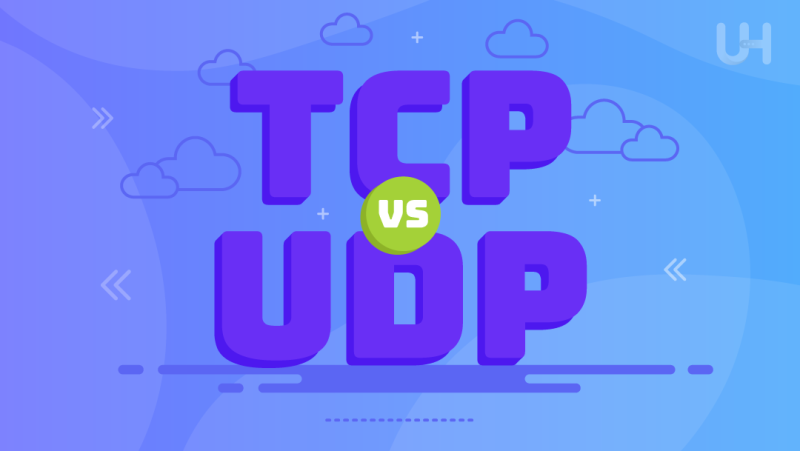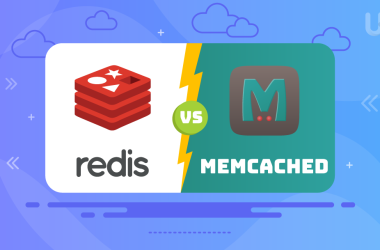Today, every computer or mobile device one uses is connected to a worldwide network. All information transfers between devices using unique protocols which set the rules for communication. Transmission Control Protocol (TCP) and User Datagram Protocol (UDP) are some of the most important ones and differ in important areas such as purpose and utility.
Communication using a computer or a mobile device becomes easy as long as one does not get into the depths of functioning. But even if networking is not on the plate, knowledge of these essentials is important for optimal configuration of firewall, consulting networking manuals, choosing the right protocol for applications, troubleshooting problems or defining business policies for data flow handling.
TCP (Transmission Control Protocol)
Transmission Control Protocol or TCP, like telephone lines, is a core component of all computer and device network engineering. The purpose of building such a protocol is to facilitate devices connected within the world wide web transfer data safely and in the right order.
Connection-Oriented Nature
A primary attribute of TCP is its connectedness of communication. Before commencing a transfer of data, a simulated connection is created between the sending and receiving parties. This remains active throughout the communication cycle to monitor the delivery of the packets to ensure they are received accurately and in sequential order.
Reliable Data Delivery
Reliable delivery of information is a characteristic feature of TCP. In order to provide assured diversity in the delivery of information, TCP uses multiple methods including the use of acknowledgment packets and the sending of data which is deemed as missing or damaged. This thorough method of delivery withstands other issues and ensures that minimal damage to data takes place during delivery.
Three-Way Handshake
A three way handshake procedure is used to inaugurate the communication procedures of TCP. Sending and receiving parties establish a connection with a mutual exchange of three messages bearing the same information. The three way handshake becomes beneficial and addresses complex as well as simple matters of communication in terms of both parties being able to share and receive messages.
Flow Control and Congestion Control
TCP makes sure a proper balancing flow is maintained when information is passed through different machines and devices. This eliminates the possibility of the sender transmitting excess data information that cannot be reasonably assimilated by the intended party ensuring maximum effectiveness is achieved. Also, Control Algorithms for congestion by TCP assist in dealing with data transfer under jammed networks.
UDP (User Datagram Protocol)
User Datagram Protocol (UDP) is another important protocol in networking which seeks to achieve a low-overhead means of data transmission. Unlike in TCP, UDP is connectionless, which means it does not bother with establishing complex procedures for sending and receiving data. UDP is part of the transport layer of the Internet Protocol (IP) suite and is preferred for applications requiring a low-latency level of interaction.
Connectionless Nature
The most important feature of UDP is its utter lack of a connection. Unlike in TCP, before sending data, there is no need to create a link in advance. Data can be fragmented into small pieces called packets and transmitted as they are- there is no need to wait to receive a response indicating packet reception. This can be useful in situations where speed is crucial and some loss of data is tolerable.
Data Delivery
Because of the structure of UDP, it cannot ensure reliable delivery of data; data can be delivered, yet there is no assurance that it will be delivered reliably and intact. Sending data in a connectionless manner means there is no form of acknowledgment and no need to resend missing packets. While such an approach may lead to loss of information in some aversion, it is very much preferable in environments where speed is much more vital than precision.
Use Cases for UDP
Real-time communication with low latency is very important which is why many services use UDP. Here are some common use cases:
Streaming Media: UDP is a favorite when it comes to the streaming world, whether it is audio or video. Due to the nature of real time streaming, UDP’s speed usability even if there is some packet loss is a tremendous benefit.
Online Gaming: Multiplayer online games often leverage UDP for its low latency and quick data transmission. Each Game needs immediacy in responsiveness so the quicker and more reliable way UDP works is the ideal solution.
VoIP (Voice over Internet Protocol): In case of voice or video communication applications like VoIP, UDP is preferred due to its speed and less overhead which allows for more seamless conversations in real time.
Unlock Peak Performance with Dedicated Server!
Take your performance, security and reliability to the next level with our fully managed dedicated hosting services. In addition, view the benefits of dedicated server and bring your website to the peak.
What are the Differences between TCP and UDP?
Header Structure
Both TCP and UDP have a different style of data transmission, which affects the header structure. TCP headers are more detailed since they need to contain information for building and maintaining connections, tracking data, and performing acknowledges. However, UDP headers are less detailed and only contain source port, destination port, and a checksum for minimal error detection.
Speed and Efficiency
TCP and UDP differ on speed and efficiency. The characteristics of TCP, such as being connection-oriented, using heavy error-checking, and losing data retransmission causes a reliable, but slower data transfer. UDP is quicker because it does not establish connections or checks overhead, but is weaker in reliability, so it’s more useful in cases where speed is prioritized and minor data loss is tolerable.
Error Checking
Data is more secure with TCP because it uses has strong error-checking methods like checksum, which adds latency. While with UDP, there’s no guarantee of delivery which allows for speed, but makes it easy to lose data which affects reliability.
When to Choose TCP or UDP
Choose TCP When
- Preferred when there’s a need for accuracy and timely delivery of data.
- Is relevant when applications pertain to transferring files or the need for precise data is important.
- Most web-based services prefer it as it is connection-oriented.
Choose UDP When
- Is relevant in real-time scenarios such as streaming or playing online games where losing some data won’t be an issue.
- When the application layer can fight off errors autonomously and recovery can be managed on its own.
TCP Applications and Protocols

SMTP (Simple Mail Transfer Protocol)
Function: Handles sending and receiving email messages across a network.
Traits: Email accuracy and timely delivery is guaranteed through the use of TCP’s reliable data delivery.
HTTP/HTTPS (Hypertext Transfer Protocol/Secure)
Function: Deals with the transfer of web content like texts, images, and audio-visuals across the Internet.
Traits: Makes certain webpages load swiftly adding security which improves browsing experience and secure communications.
FTP (File Transfer Protocol)
Function: Allows clients to transfer files to and from servers within the network.
Traits: Transmitting large files is done in a reliable and sequential manner due to TCP’s connection-oriented delivery.
UDP Applications and Protocols
DNS (Domain Name System)
Purpose: Converts domain names into IP addresses; assists in resolving web domains DNS translates friendly web addresses into numerical IP addresses.
Characteristics: Because the quick responsiveness and lower accuracy of queries are Domain Name System (DNS) queries require speed and occasional data loss is tolerable, making UDP ideal.
DHCP (Dynamic Host Configuration Protocol)
Purpose: It is used to dynamically allocate assign IP addresses of devices towards a specific network.
Characteristics: The lack of a connection allows unrestricted flow of data makes rapid assignment of IP addresses possible through UDP’s connectionless nature.
Streaming Media (e.g., UDP for Video and Voice)
Purpose: Streaming audio and video content in real-time over the Internet.
Characteristics: Required speed and efficiency with minimal latency in live feeds make UDP suitable for applications like online gaming, video conferencing, and live streaming.
Conclusion
TCP and UDP, with all their differences in characteristics, are the foundations for modern networking technology. Applications that need high accuracy in data transmission value the reliability of TCP, while real-time communications that permit losing some information without greatly affecting the function use the speed of UDP. The choice of which TCP vs. UDP to use relies on the nature of the application, tolerance for delay, and need for instantaneous responsiveness.
Grasping the differences between TCP and UDP is important for making reasonable choices when designing a network. It assists professionals in optimizing performance according to a particular application’s needs. Besides, the careful interplay of TCP and UDP enables communications to be performed efficiently, which enables the reliable and speedy transfer of information in computer networking.
Enjoy improved reliability, performance, and speed while maintaining an online presence with our speedy Virtual Private Server. Enhance your digital presence today with Ultahost’s premium VPS hosting services.
FAQ
What is the main difference between TCP vs UDP?
The primary difference lies in their approach to data transmission. TCP is connection-oriented and ensures reliable and ordered data delivery, while UDP is connectionless, prioritizing speed and efficiency with occasional data loss tolerance.
What is the significance of UDP in streaming media?
UDP’s speed and efficiency make it ideal for streaming media applications, providing low latency for live content delivery, such as video streaming and online gaming.
Are there scenarios where using both TCP and UDP is beneficial?
Yes, certain applications benefit from a combination of TCP and UDP. Online gaming is a classic example where UDP is used for real-time game data, while TCP handles non-real-time tasks like chat messages or in-game purchases.
How do I decide whether to use TCP or UDP for my application?
Consider factors such as the nature of the application, the importance of data accuracy, the need for low latency, and the tolerance for occasional data loss. TCP is chosen for reliability, while UDP is favoured for speed and efficiency.










